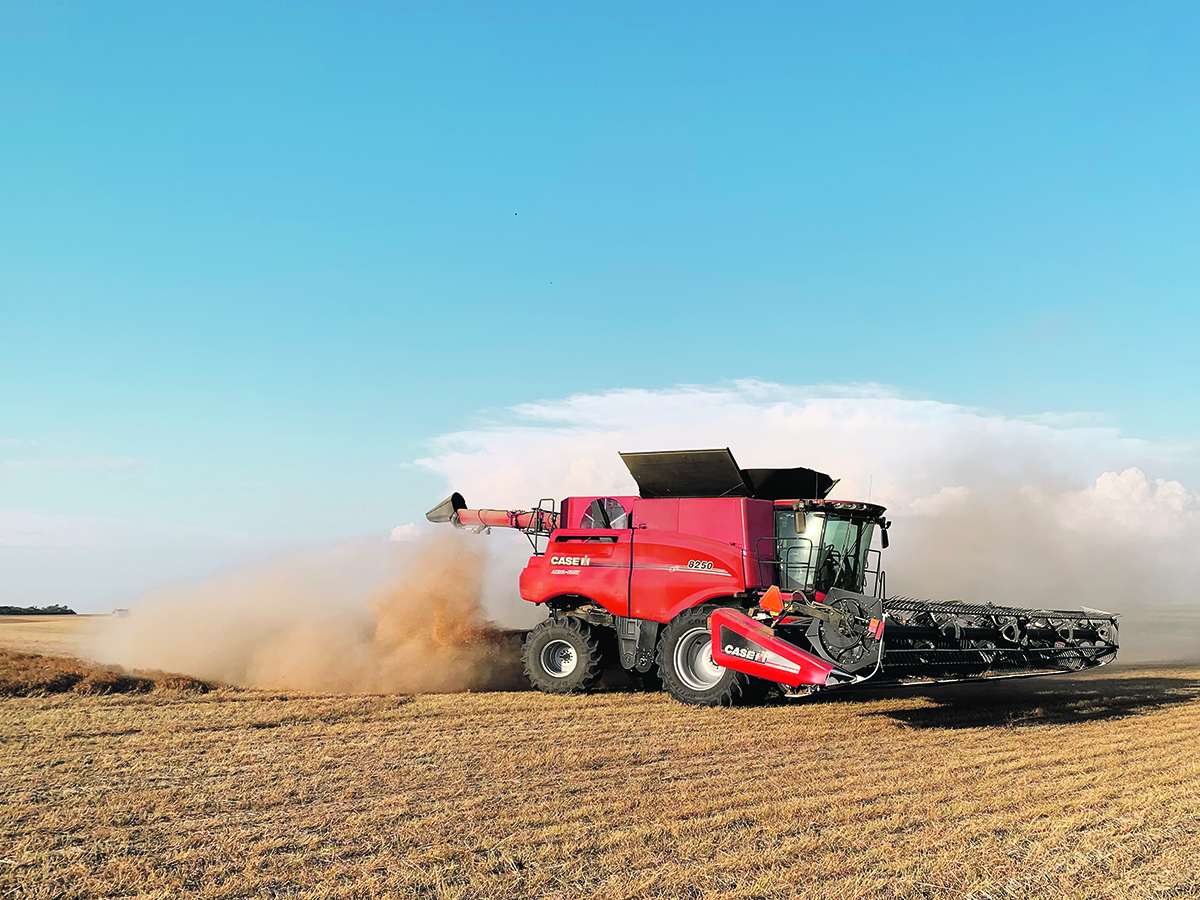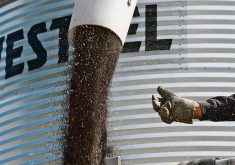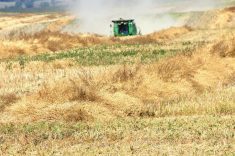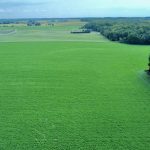Glacier FarmMedia – A recent study by Agriculture Canada provides a glimpse into why some Canadian producers use harvest weed seed control, the effectiveness of the technology and some of the challenges associated with it.
The 49-question online survey was conducted between spring and fall 2023. Ten producers from Alberta and Saskatchewan who were early adopters of the technology responded. Results were published in the September 2024 edition of the Canadian Journal of Plant Science.
An impact mill is attached to the rear of a combine. As a crop is harvested, weed seeds from the back are fed into the mill, where they are spun at a high rate of speed. That damages and renders them nonviable. This material is then spread back in the field.
Read Also

Forecast leans toward cooling trend
July saw below average temperatures, August came in with near to slightly above average temperatures and September built on this warming trend with well above average temperatures for the month.
The mills also reduce the spread of weed seeds during harvest, resulting in lower herbicide costs and reduced selection pressure for herbicide resistance.
Among the most popular devices are the Redekop Seed Control Unit, the Integrated Harrington Seed Destructor, the Seed Terminator and the WeedHOG.
There have been other Canadian studies on impact mills, but this was the first to look at harvest weed seed control that incorporates on-farm experiences.
Agriculture Canada research scientist Breanne Tidemann says researchers have done small-plot research and field trials on the technology, but it was important to get on-farm data.
“No matter how much small-plot research or even field trial-scale research you do, it’s not the same as a farmer using it on all their acres for multiple years,” says Tidemann, who led the research study. “They just get insights and experiences that we can’t get.”
The survey used a relatively small sample size, but the 18 weed seed mills that were part of it represented 60 per cent of the machines thought to be used in Canada in 2023. Results will provide a baseline that researchers can revisit to determine changes in adoption rate and users.
The study focused on several key issues, including who uses harvest weed seed control technology and why; challenges they have encountered; crops on which it is used; maintenance and fuel costs and its effect in controlling problem weeds.
Most of the responding producers operate farms of 10,000 acres or larger. They equipped most of their combines (75 per cent) with the mills, but were strategic because they had a limited number of machines available.

Respondents said wild oats (60 per cent) and kochia (50 per cent) were the top weeds that motivated them to use impact mills. Tidemann says she was surprised to see wild oats ranked so high.
“All the research that we’ve done has shown wild oat loses its (weed) seeds early, so there’s some challenges using harvest weed seed control for wild oat. But I’m not surprised that it’s pushing people to try alternatives.”
The survey results also showed a weed seed mill behind a combine adds an additional $1.40 in fuel costs per acre. Tidemann says it’s up to individuals to determine how affordable that is, since it largely depends on the size of the farms they operate.
On average, producers said it cost them about $1,500 a year in maintenance per impact mill, including greasing and changing parts such as bearings and belts.
Tidemann says it was difficult to pinpoint a precise figure since many respondents had only recently adopted the technology and estimated what their costs would be. Longer-use adopters indicated annual maintenance costs of about $1,750 for each unit.
Participating producers were also asked about limitations or challenges when using the mills. Most (70 per cent) identified plugging due to green material as a significant limitation, and kochia was a problem in that regard.
“A very large patch of kochia that’s essentially choked out all the crop, if you try and take that in one fell swoop, you will be unplugging the back of your combine. There’s got to be enough dry materials to push it through,” Tidemann says.
Despite that, a number of respondents said kochia had the greatest response in terms of mill use. They also noted reduced use of herbicides with grassy weeds such as wild oats and green foxtail when using an impact mill.

Wheat (90 per cent), canola (80 per cent) and lentils (80 per cent) were identified as the crops in which mills were most utilized.
Producers were asked to estimate how long it will take to recoup the investment in an impact mill and the most common response was three to five years (60 per cent) followed by six to eight years (20 per cent).
“It’s reassuring that those people that are adopting are going in with the mindset that it’s going to take some time and they’re not expecting an immediate response, which is going to lead to people stepping out of it before they would maybe see the impact,” Tidemann says.
Respondents said they most commonly consulted manufacturers and other farmers before using an impact mill.
“The mill companies makes sense,” says Tidemann. “The second one, early adopting farmers, was interesting. To me, what that’s saying is it’s all good and fine to have someone like me out talking to them, but you’re going to get a whole lot more bang for your buck if you have a farmer that’s actually using the thing. They want to hear from farmers who are using the machines.”
Jason Waldenberger participated in the study. He operates a 6,500-acre grain farm north of Moose Jaw, Sask., and has been using an Australian-manufactured Seed Terminator impact mill for the past three harvests.
Waldenberger says he’s an “easy sell” when it comes to adopting new technology and became interested in impact mills several years ago, after meeting another farmer who was using one. He was prompted to try it himself after noting chemical resistance among weeds in fields where he was growing pulse crops.
He says participating in the study was a no-brainer, since anything producers can do to help the research community also helps themselves.
“We’ve got some fantastic people working in our industry,” he says. “I think anytime we can work with those kinds of people or pass along information and vice versa, they can then do really good, steady work and help us make better decisions and give us feedback on what they’re finding.”
Tidemann says data from the survey could help manufacturers adjust their products to address concerns. It may also provide direction for future research in terms of the technology.
Asked to identify research that was still needed regarding impact mills, the three most common farmer responses were efficacy on weed densities, impact on precision spraying and grain loss calculations.
“There’s still lots of things that we don’t know (about the technology) and this gives us an idea of what’s important on-farm,” says Tidemann.















